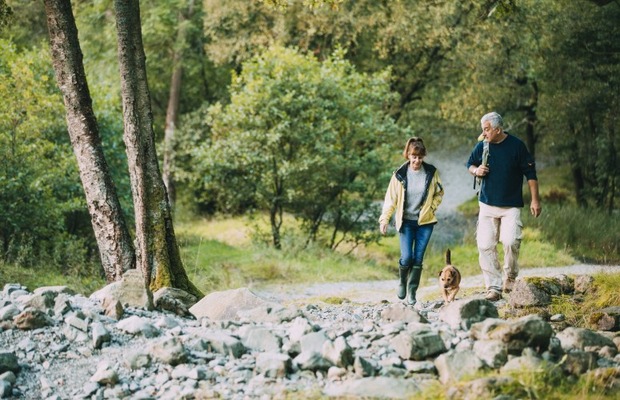
Respiratory
We are a multidisciplinary team providing expert respiratory advice and treatment across Leeds

Our experienced team specialises in supporting patients aged 18 and over with Chronic Obstructive Pulmonary Disease (COPD). People will have input from respiratory nurse specialists, respiratory physiotherapists, and clinical support workers at home, in hospital, pulmonary rehabilitation and clinics (including oxygen). We also deliver education for other health care professionals.
The Community Respiratory Team provides a specialist service targeting the management of COPD in the community. The aim of the service is to improve the quality of life of patients with COPD, enhancing self-management and providing patient choice.
What we offer
The strands of care we deliver are:
- Early supported / facilitation discharge and prevention of hospital admissions
- Oxygen clinics: New assessment and follow up clinics for oxygen patients
- Pulmonary rehabilitation
- Chest physiotherapy for COPD / Bronchiectasis
- Nurse intervention
- Home visits and clinics
What to expect on a home visit/clinic
The first time we see you we will carry out a full assessment of your lungs so we can get to know you and your symptoms better.
This helps us to tailor your care and make sure it’s right for you. This may include:
- Inhaler advice
- Nebuliser advice
- Use of antibiotics and steroids
- Chest auscultation (listening to your chest)
- Oxygen levels
- Self-management
- Referral to pulmonary rehabilitation classes
- Smoking cessation
- Psychological assessment
- Home exercise programme
- Airway clearance help
- Breathlessness management
Referrals
Referrals are made by your GP or other healthcare professional or you can refer yourself, if you are know to the team, by contacting us on leedsintegrated.copdservice@nhs.net or 0113 843 4200
For referring GPs please following the link to our referral form found on Leeds Health Pathway
Breathing techniques
Breathing techniques
Information for people with long term lung conditions to assist in the management of breathing symptoms.
Breathing control
- Helps you to get your breath back after or during activity
- Encourages a more “normal” breathing pattern
- Uses gentle “relaxed” breathing using the lower part of your chest, with relaxation of the upper chest and shoulders
- You shouldn’t feel like you are working at breathing
How to do it…
- Settle yourself into a comfortable position
- Rest one hand on your lower rib cage and the other one on your lap
- Relax your shoulders and upper chest
- Concentrate on letting your chest move under your hand
- Feel your hand rise and fall with your chest as you breathe in and out
- Think about your breath in coming in through your head and breathing out through your feet
- Breathe at your own rate
- Continue until your breathing is back under control
- Once you are happy about doing this, try resting both hands (palm up) on your lap
Positioning
Here are some different positions to use with breathing control. Try them all to find out which one works best for you.
- Sit on a chair and lean forward with both of your arms resting on your thighs, relax your wrists
- Sit upright on a chair with both hands resting on your lap – palms upright
- Stand leaning forward with your arms resting on a ledge or window sill
- Lean back against a wall or closed door with your shoulders relaxed and arms resting down by your side. Place your feet about 12 inches away from the wall and slightly apart
Active Cycle of Breathing Technique (ACBT)
There are 3 components:
- Breathing control (relaxed breathing)
- Deep breathing
- Huffing
It can be done in sitting or lying.
May need to stay in position for 10 minutes before changing.
1. Breathing control
Already mentioned on previous page
2. Deep breathing
- Expands the chest as far as possible
- Allows air to move behind trapped sputum and loosen it to be coughed out
How to do it…
- Take a slow, relaxed deep breath in, as far as you can
- Hold your breath for 3 seconds (if you can)
- Followed by a relaxed breath out
- Repeat 3 times
3. Huffing
- “Pushes” the air out
- Encourages the sputum up through the airways until it can be cleared out
- If the huff is too short, it can be ineffective
- If it’s too long, it can lead to bouts of coughing
How to do it…
- Take a normal breath in
- Keep your mouth open and “huff” the air out (like steaming up a mirror)
- Repeat 1-2 times
- Do breathing control between huffs if you feel wheezy
- When the secretions reach the bigger airways, cough the sputum out
ACBT quick guide
- Breathing control
- 3 deep breaths and hold
- Breathing control
- 3 deep breaths and hold
- Breathing control
- 1-2 huffs
- Cough if required
- Repeat as necessary
Autogenic drainage
- Uses breathing out as far as possible to loosen sputum in the small airways
- It is then moved to the larger more central airways making it easier to cough up
- Choose a comfortable, well supported position:
– Sitting upright
– Lying down with pillows
How to do it…
- Breathe in slowly, using your lower chest (as in breathing control)
- Hold your breath for 3 seconds, allowing air to evenly fill your lungs
- Push your breath out for as long as you can, keep going right to the end
- Take a slow relaxed breath in – don’t take a big breath or expand your chest as much
- Breathe out all the way again, pushing all the air out of your chest completely
- Repeat the cycle, breathe in and out slowly to avoid pushing the sputum back
- Continue until you hear or feel the sputum collecting or you feel the urge to cough
- When you need to cough, first have a “huff” and then cough
Pursed lip breathing
- It is breathing out through half-opened lips
- Some people do this naturally when breathless
- It helps with breathing out
- It reduces breathing rate and breathlessness
- It improves oxygen saturation and tidal volumes
- Some people find it beneficial and others don’t
Chest clearance
- It is important to clear your chest of as much sputum as possible
- Reduces obstruction
- Improves the amount of air getting through
Breathlessness at night
- Many people suffer from breathing difficulties during the night
- It can be frightening
- It can increase anxiety (which makes breathlessness worse)
If you wake up breathless, try:
- Sitting up over the edge of the bed, leaning forward
- Keep a fan by your bed and have it blowing on your face
- Keep your inhalers close by – take your reliever
- Use breathing techniques and positioning
- DO NOT fight your breathlessness. Relax – tensing muscles uses more energy making you more breathless
Pulmonary Rehabilitation
Pulmonary Rehabilitation
Information for people with Chronic Obstructive Pulmonary Disease (COPD) and other respiratory conditions
What is Pulmonary rehabilitation and how will it help me?
Pulmonary rehabilitation is an exercise course for people with long term lung conditions.
These conditions may be Chronic Obstructive Pulmonary Disease (COPD), Pulmonary Fibrosis or Bronchiectasis. Patients with other long-term conditions may also benefit.
Pulmonary rehabilitation may help you to:
- Increase your fitness and make your usual activities easier.
- Manage your breathlessness.
- Increase your walking distance.
- Increase your confidence in exercising and completing activities of daily living.
- Educate you to reduce risk of infection and hospital admission.
The sessions are twice a week for six weeks.
What will the exercise classes be like?
Each week, you will do two classes, which will include:
- A warm-up and cool-down
- Aerobic exercises (e.g. walking, cycling)
- Strength exercises
Classes will be run by physiotherapist and qualified instructors from Active Leeds.
All exercises can be done sitting down if you need to.
We may ask you to bring a carer or relative if you need extra help.
What will the education sessions include?
They will cover different topics to help you manage your symptoms, some of these include:
- Medication
- Dietitian
- Breathing techniques
- Anxiety management
- Self-management
- Information on lung conditions
How will I know the classes are suitable for me?
You will attend a face-to-face assessment before starting the class. You can bring a friend, family member or carer to your pre-assessment.
Where are the classes held?
The classes are at four venues. They are on different days of the week at:
- Woodhouse Medical Practice, Cambridge Road
- Old Fire Station, Gipton
- Middleton Leisure Centre, Ring Road Middleton
- Armley Leisure Centre, Carr Crofts
You can discuss the best days for you at your first face-to-face assessment.
We also offer virtual classes online. You will need to have access to a tablet or computer.
What happens after Pulmonary Rehab?
You will be able to access a variety of different activities at a leisure centre or community venue. This will be with Leeds City Council for 12 weeks.
MyCOPD app
We can provide you with access to the MyCOPD app if you have COPD. It has exercise videos along with a lot of other useful information.
Breathe Easy
Breathe Easy groups run throughout Leeds. They offer weekly exercise classes, talks and socials. They are run by patients, for patients. There is a small cost for each group.
Shared Harmonies
This is a singing for breathing group which runs at Middleton Community Centre or online. You can discuss it further in your class.
What should I do now?
You may have received a letter offering you pulmonary rehab. If so, please call the team on 0113 843 4200 or email lcht.longtermconditions@nhs.net.
Our office is open 8:30am-4:30pm, Monday-Friday.
If you do not have an opt-in letter but would like to be referred, please speak to your GP, practice nurse or respiratory specialist.
Find out more about Pulmonary rehabilitation here: asthmaandlung.org.uk


